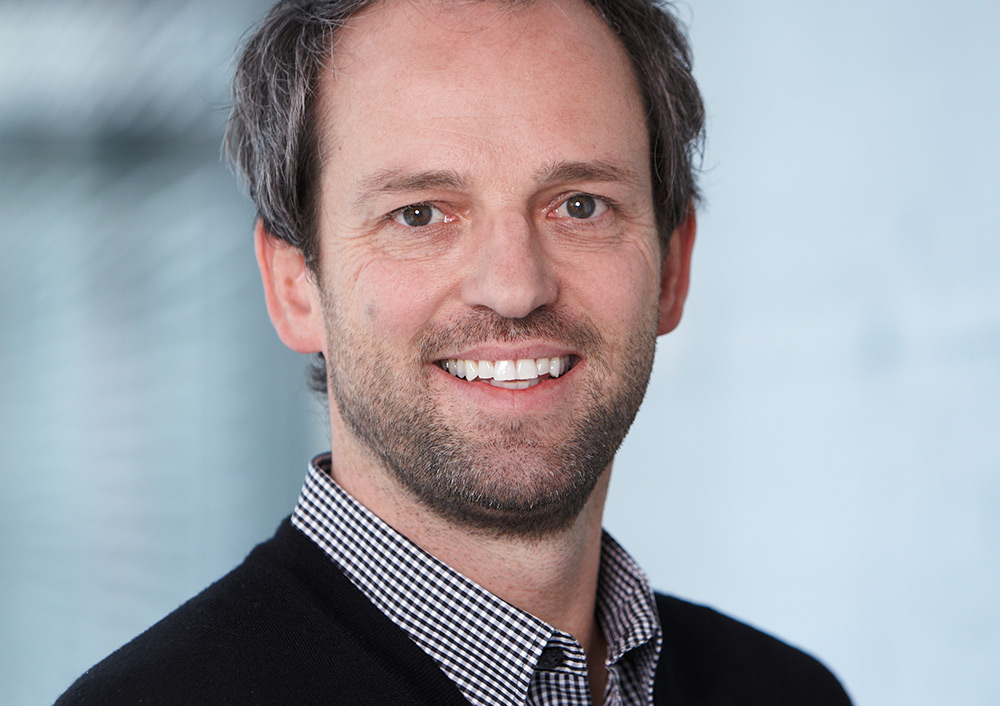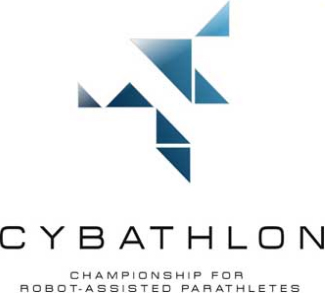
Robohub.org
Bionic athletes compete in disciplines drawn from everyday life

By: Vanessa Bleich
Next year’s Cybathlon will host people with physical disabilities equipped with advanced assistive devices including robotic technologies. The goal of this unique competition is to remove barriers between people with physical disabilities, researchers and the general public and to promote the development of assistive technologies that are useful for daily life. We talked to Robert Riener, the Cybathlon’s main organizer and Professor of Sensory-Motor Systems at ETH.

Robert Riener is the initiator and organizer of the Cybathlon. (Photo: ETH Zurich / Giulia Marthaler)
You are the initiator and main organizer of the Cybathlon. How did the idea for this event come about?
As a researcher, I’m always on the lookout for opportunities to present my research to the general public. A few years ago, I read an article in the newspaper about a man who climbed the stairs at the Willis Tower in Chicago using a motorised prosthetic leg. It inspired me to think about a similar event that could be held here in Switzerland – an event that would extend beyond a single race to include many other disciplines. Through talks with colleagues and employees, I gradually developed the idea further. I also thought increasingly about what exactly we wanted to communicate and achieve with this event.
What do you hope to achieve through the Cybathlon?
Our original idea, which was to present our research findings to a wider public, of course remains a goal that we continue to pursue. But we would also like to raise people’s awareness of the needs of people with physical disabilities and the obstacles they face in everyday life. Unfortunately, many people without disabilities know very little about the challenges faced today by people with physical disabilities. Alongside technical assistance, for example, accessibility is also extremely important. We believe this knowledge, in turn, can break down more barriers.
Besides overcoming reservations about the field, we want to motivate developers to create technologies that provide real support to people in daily life. That is why the races feature everyday obstacles, such as stairs, ramps and doors. We hope Cybathlon’s competitive nature will boost the development of powered assistive technology in the long term. It’s already having a positive impact: new student groups have been formed and research projects have emerged. Both students and researchers are working at full speed on their prototypes.
What are the main difficulties when developing electrically powered devices?
The weight-performance relationship is one of the greatest challenges. For example, if you want to build a wheelchair that climbs stairs, it must be wider for stability reasons. When combined with the additional mechanics and propulsion system, it’s automatically heavier. The same goes for the development of the exoskeleton. The integrated batteries must be very efficient to allow the wearer to move freely and independently throughout the day, but these batteries weigh a lot.
CybathlonThe Cybathlon will take place on 8 October 2016 at the Swiss Arena in Kloten. People with varying degrees of disability, aided by cutting-edge assistive technology, will participate in the unique competition. A team is comprised by a technology provider and at least one pilot who directs the technological device. As a result, two medals await each winning team at the Cybathlon: one for the parathletes and another for the provider. The technological device that is deployed can either be a product that is already available on the market or a prototype from a research lab.
The competition features six different disciplines:
- Powered leg prosthesis race
- Powered arm prosthesis skills course
- Powered exoskeleton obstacle course
- Powered wheelchair race
- Functional electrical stimulation bike race
- Brain-computer interface virtual race
Robert Riener, head of ETH Zurich’s Sensory-Motor Systems Lab, is the initiator and main organizer of the Cybathlon.
Are there other challenges besides the power supply?
While the performance data for the powered leg prosthesis is already very good, the control is more problematic. The wearer’s intended movements must be correctly conveyed to the leg prosthesis. This means that the prosthesis should automatically detect what the person wants to do, be it standing up, sitting down or climbing stairs. This is less of a problem when it comes to conventional, passive prostheses because the wearer intuitively propels them by moving or swaying.
What is the current state of research in the area of powered assistive technology?
The technology is already quite advanced today in some areas. For example, it is now possible to run quicker with certain leg prostheses than a human with natural legs could. But such prostheses are only helpful for specific movements. You may be able to walk quickly, but not be able to sit down, walk up stairs, or drive a car. Most of the available aids have significant deficits with regards to everyday functions and potential users have therefore failed to embrace them. This is where the idea behind the Cybathlon comes in: systems need to be developed that provide help to people with disabilities where they need it the most – in daily life.
How does the Cybathlon differ from other competitions such as the Paralympics?
People with disabilities can participate and compete in both events. The Paralympics, however, is primarily a sporting competition. Technology remains in the background and the use of motorised wheelchairs or powered prostheses is not permitted. As a result, many people are unable to compete. At the Cybathlon, on the other hand, «pilots» with greater restrictions who primarily direct the technical aids – are also eligible to participate. Although people are at the centre of our event, technology also plays a relatively large role.
The Paralympics are focused on sporting disciplines. In addition to races honouring the athlete who reaches the finish line first, the Cybathlon competition also includes skills and obstacle courses featuring everyday tasks and barriers. It’s not only the time that counts; pilots also receives points for their skills. Just like in classic sporting events, competition drives both the pilots and the technology developers at the Cybathlon. They inspire each other to deliver their best performance.
What has the response been to the planned event up until now?
There’s been a great deal of interest in the event. We have received very positive feedback from the scientific community, the media and well-known Swiss organisations for the disabled. The disability associations share our view that the Cybathlon could contribute to the development of current devices. Some critics, however, argue that these sorts of efforts should be focused exclusively on making buildings and the environment barrier-free. But the world does have barriers and you can’t just make them disappear – there are hills, forest paths and so forth. Researchers are developing technologies so they no longer pose obstacles in the future.
If you liked this article, you may also be interested in:
- Novel robots for gait and arm rehabilitation: Interview with Robert Riener
- Introducing the Cybathlon
- Registration now open for Cybathlon 2016
See all the latest robotics news on Robohub, or sign up for our weekly newsletter.
tags: c-Research-Innovation, cx-Events, cx-Health-Medicine, Cybathlon, ETH Zurich, human-robot interaction, interview, Robert Riener, robohub focus on diversity





